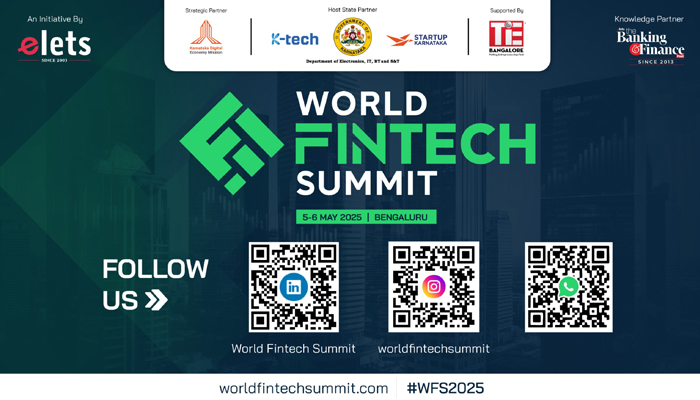 The new fintech wave has become the biggest source of disruption to the banking industry. Recent reports suggest that 73 percent of millennials would rather use Google, Amazon, Apple, PayPal or Square than a nationwide banking, whereas 64.8 percent of banking executives believe that their customers are happy banking at traditional banks.
The new fintech wave has become the biggest source of disruption to the banking industry. Recent reports suggest that 73 percent of millennials would rather use Google, Amazon, Apple, PayPal or Square than a nationwide banking, whereas 64.8 percent of banking executives believe that their customers are happy banking at traditional banks.
Of course, the senior management across the banking sector are well aware of the fact that digital disruption, data explosion, and customer experience are driving the mandate for intelligent operations. Traditional banks are now looking at new ways to deploy technology and provide technology-driven experiences to customers. In its quest to cater to customer demands and being relevant in the digital age what are traditional banks doing in the background?
Today, banks have gone through multiple technology and IT systems additions over time and the stack is loosely wired together. This set up makes the banks’ transformation into future-proof enterprises difficult and they recognise this issue. Every bank in the world today is deliberating on a technology roadmap for themselves and that can be achieved through intelligent operations, driven by three elements, which will bring in a new era in the business of banking.
1. Business of APIs
As digital technologies become popular, customers are more likely to use a digital medium for transactions than conventional ones. Fintech enterprises have already identified niche areas where they can provide an enhanced customer experience and evolve the banking processes. According to the World Retail Banking Report 2017, published by Capgemini in conjunction with European Financial Management and Marketing Association (EFMA), fintech firms are more likely to provide consumers with positive banking experiences than traditional banks. To mitigate this threat, traditional banks are looking forward to move services away from them and place them into the heart of the customer business. Application Programming Interface (API)or open banking services allow businesses to access the bank’s transaction processing services for their enterprise resource planning (ERP) platform.
APIs help the banks to be future proof by entrenching themselves deep into the customers’ business in turn creating strong and dynamic customer ties. In the face of increasing competition, APIs are now pivotal to the future of banking to quickly innovate and meet rapidly changing customer demands. On the other hand, rather than looking as fintech businesses as a threat, APIs are enabling banks to seamlessly collaborate with stakeholders including Fintech businesses and third parties, to achieve their digital goals, thereby creating value-based market offerings for the customers.
2. Mastering the Data Supplying Chain
As banks start digitising their services and products, they start accumulating data from a host of sources. Hence, institutions have a lot more data to handle today, impacting everything from compliance to customer relations. It is important to understand how data is flowing through the bank. If a customer does a transaction on the mobile/internet portal, the data is transferred from the portal to the general ledger while moving through multiple touch points such as the core banking section and the back office. This seamless flow of data is crucial to create an agile environment, quickly analyse data and act.
The data supply chain management helps banks understand the movement of data across multiple systems to identify bottlenecks and ease the same using technology interventions like RPA (Robotic Process Automation). As banks more forward, this quick flow of data is being aided by leveraging technology to visuali se and manage the flow of data within the organisation which is helping them offer better solutions to clients.
3. Internet of ‘Me’
By 2020, customer experience will overtake price and product as the key brand differentiator, according to Frost & Sullivan. Consumers seek personalisation from the look and feel of the user interface to the offers that enterprises make to earn business. Additionally, rise of the ‘Internet of Things’ means that today’s customers are engaging with multiple devices at the same time and are hyperconnected. Traditional banks are taking cogni sance of this development and reinventing its services to meet new age demands.
In a country, such as India where a significant population is below the age of 35, the success of the banks lies in providing a personalised experience and delivering them in a very authentic manner. Consumers want everything from offers to the welcome message on their login screen personalised to their taste. To do this, banks are mining data to understand consumer behaviour at a granular level, create individual personas and sub-personas, and then engage them through their preferred channels. Digital banking has already altered the dynamics of banking and it runs parallel to traditional over-the-counter banking. The future of banking lies in a true omni-channel experience where consumers can conduct a banking experience spreading across multiple device. For example, you might be able to do an ATM withdrawal using NFC or start an ATM transaction on your phone and then withdraw using a QR code.
A Collaborative Future
As banks look inward to tighten their technology integrations, the consumers will notice a series of changes that will provide them with a seamless banking experience. Fintech enterprises will play an integral part in this revolution through their technology-led approach and consumer-driven solutions. Offers and opportunities will be presented on real-time based on customer preferences. Banks, on the other hand, will be rewarded with increased loyalty, deeper relationships, and eventually increase productivity through improved sales volume.
Views expressed in this article are of John Santhosh, Founder, and CEO, GIEOM and do not necessarily reflect the opinions, beliefs and viewpoints of The Banking & Finance Post.
About John Santhosh – John Santhosh is a parallel entrepreneur with 20+ years of experience in providing IT solutions for Banking, Finance and Engineering enterprise businesses. A believer of building ‘customer funded businesses’, John has built four companies from ideas to products and scaled up the business to become profitable without any institutional funding.After spending 15 years in leadership roles with Oracle, ABB and Nimbus, John founded GIEOM, an enterprise productivity solutions company and built it into a global market leader in BFSI sector, with 40+ customers across the world. He currently runs three successful enterprises currently – GIEOM, Billion Lives and In Consulting.
Elets The Banking and Finance Post Magazine has carved out a niche for itself in the crowded market with exclusive & unique content. Get in-depth insights on trend-setting innovations & transformation in the BFSI sector. Best offers for Print + Digital issues! Subscribe here➔ www.eletsonline.com/subscription/




















